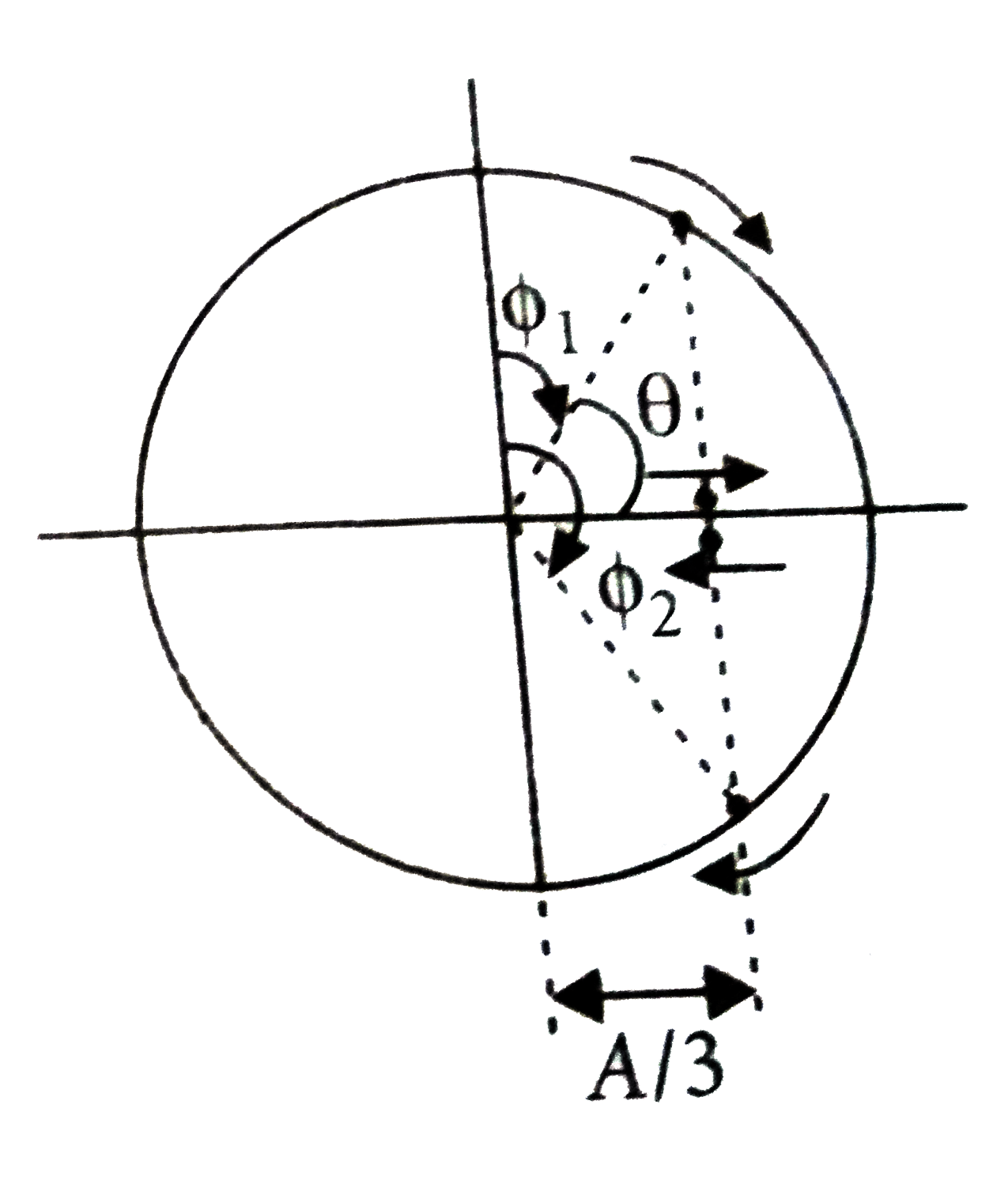Two particles execute SHM of same amplitude and same time period, about same mean position but with a phase difference between them. At an instant they are found to cross each other at . The phase difference between them is
The correct Answer is:C

Clearly,
Phase difference,
Topper's Solved these Questions
- OSCILLATIONS Book:NCERT FINGERTIPSChapter:OSCILLATIONS Exercise:NCERT Exemplar
Explore 10 Videos
- OSCILLATIONS Book:NCERT FINGERTIPSChapter:OSCILLATIONS Exercise:Exemplar Problems
Explore 1 Video
- OSCILLATIONS Book:NCERT FINGERTIPSChapter:OSCILLATIONS Exercise:Forced Oscillation And Resonance
Explore 6 Videos
- MOTION IN A STRAIGHT LINEBook:NCERT FINGERTIPSChapter:MOTION IN A STRAIGHT LINEExercise:Assertion And Reason
Explore 15 Videos
- PHYSICAL WORLDBook:NCERT FINGERTIPSChapter:PHYSICAL WORLDExercise:Assertion And Reason
Explore 10 Videos
Similar Questions
Two particles execute SHM of same amplitude and frequency on parallel lines. They pass one another when moving in opposite directions each time their displacement is one thhird their amplitude. What is the phase difference between them?
View SolutionTwo particles are in SHM with the same amplitude and frequency along the same line and about the same point. If the maximum separation between them is √3 times their amplitude, the phase difference between them is 2πn. Find value of n
View Solution
Knowledge Check
Two particles executing SHM of same frequency, meet at x=+A/2, while moving in opposite direction . Phase difference between the particles is
Aπ6Bπ3C5π6D2π3Two particles execute S.H.M. along the same line at the same frequency. They move in opposite direction at the mean position. The phase difference will be :
A2πB2π/3CπDπ/2Two particles execute SHM of same amplitude of 20cm with same period along the same line about the same equilibrium position. If phase difference is π/3 then the maximum distance between these two will be
A10cmB20cmC10√2cmD20√2cm
Two particles A and B are describing SHM of same amplitude (a) and same frequency (f) along a common straight line. The mean positions of the two SHMs are also same but the particles have a constant phase difference between them. It is observed that during the course of motion the separation between A and B is always less than or equal to a.
(a) Find the phase difference between the particles.
(b) If distance between the two particles is plotted with time, with what frequency will the graph oscillate?
View SolutionTwo particles P and Q describe S.H.M. of same amplitude a, same frequency f along the same straight line from the same mean position. The maximum distance between the two particles is a √2, If the initial phase difference between the particles is πN then find N :
View SolutionTwo particles A and B execute simple harmonic motions of period T and 5T/4. They start from mean position. The phase difference between them when the particle A complete an oscillation will be
View SolutionA particle is executing SHM of amplitude A, about the mean position X=0. Which of the following cannot be a possible phase difference between the positions of the particle at X=+A/2andX=−A/√2.
View SolutionA particle is executing SHM of amplitude A, about the mean position X = 0. Which of the following cannot be a possible phase difference between the positions of the particle at x = + A/2 and x = A/√2
View Solution
